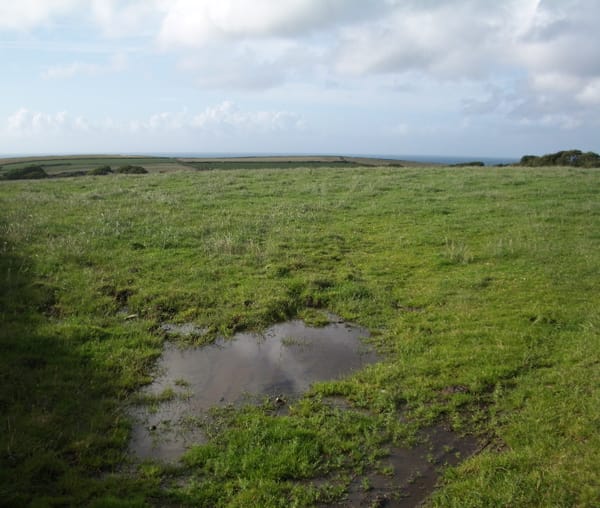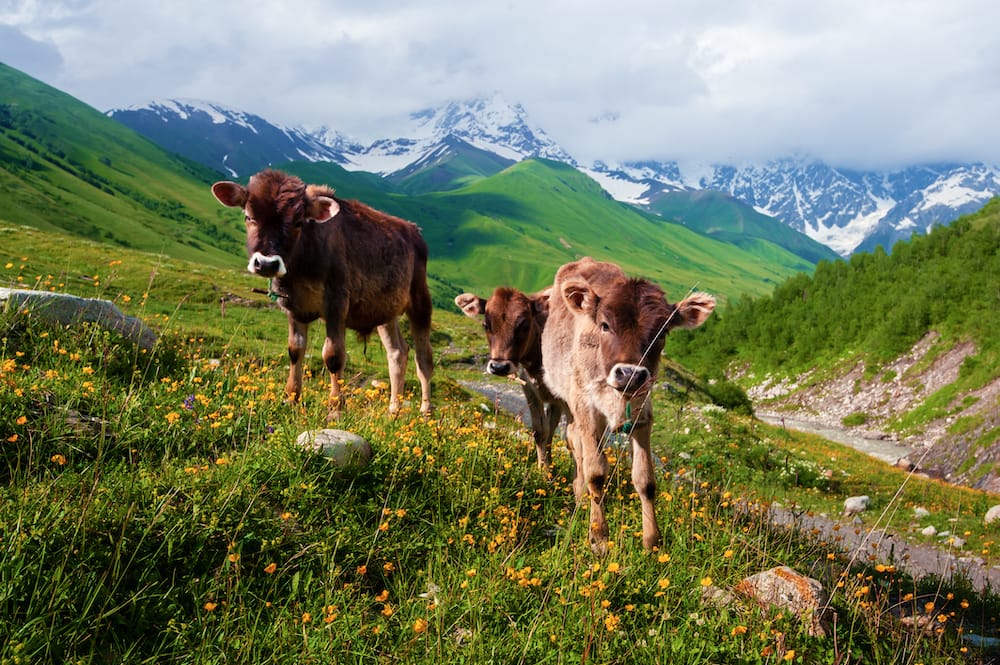Choosing the perfect calving date can have a big impact on your livestock farm. Why?
Because your calving season has a huge effect on so many goings-on in your farm – right from peak lactation to rebreeding, weaning and marketing. Since each farm is so unique, just like each farmer is, there is no such thing as a universal calving date.
In this livestock health article, I’m going to tell you how to pick the right calving date to suit your farm.
How calving affects management decisions:
- The start of calving season is fixed by the start of the breeding season.
- Cows that calve in autumn need more ration in winter than cows that calve in spring which will feast on fresh green pasture.
- Cows born in autumn are marketed in spring and calves born in spring are marketed in autumn.
Let’s discuss all the factors that will help you pick the right calving date:
Nutrition/forage
You know that your cows’ lactation levels largely depend on a good supply of delicious, high-quality grass. A good supply of milk is necessary for your future calves to turn into strong, strapping cows. Choose a calving date wherein your cows’ lactation period coincides with high forage quality.
Spring-calving cows usually benefit from warm-season grass production and autumn-calving cows usually like to feast on cool-season grasses.
Cattle nutrition is affected by the calving date and can be split up into five major categories:
- The everyday nutrition they need to be healthy throughout the year.
- The special nutrition they need for healthy bones and muscles, especially in cattle who haven’t yet attained maturity.
- Nutrition needed during pregnancy – this usually hikes up during the last three months of the pregnancy period.
- Nutrition needed during lactation – there’s a huge requirement for some extra nutrition in lactating cows. If your calving season is the same as your growing season, your cows can get their fill of flourishing pastures that will easily meet their nutritional requirements. On the other hand, if your cows are born in early spring or late winter, they will need to be fed with cattle feed so that they can keep producing high-quality milk.
- Nutrition needed to bring the cow’s body back to estrus cycles after pregnancy

Weaning and calving rates
Because of the weather/climate and availability of nutrients, the weaning weight will be different as per the calving season.
Autumn-calving cows usually need a lot more nutrients than spring-calving cows during winter when the supply of forage is low. Autumn-calving herds are generally more expensive to maintain because of the expensive feed ration that farmers have to feed their cows.
Feed prices
Farmers usually have two separate goals – either to be the lowest-cost producers or to be able to fetch the highest price for their calves. It’s important to find the right balance between your cattle and the market rates when picking out the right calving time.
Calves born in autumn and marketed in spring usually get higher prices than calves born in spring and marketed in the autumn. This is largely due to the demand curve since most calves are weaned and marketed in autumn and fewer calves are weaned and marketed in spring.
Labour
Labour is an important factor that steers farmers to choose their calving season. You know that one of the major challenges you face is having skilled labour who are a perfect fit for your farm.
Some producers prefer to avoid labour-intensive calving systems so that they do not have to hire additional staff to manage the operation. Some may prefer to calve when farm labour is available. And some may time their calving to combine with other practices on their farm like planting or harvesting.
Heat stress
Many areas especially those in equatorial regions experience a lot of heat and humidity. High temperatures can affect the reproductive performance of both male and female cows.
A female cow basking in too much heat can actually experience low follicular activity and reduced blood flow to the uterus. This can lead to the loss of embryos.
A male bull’s reproductive abilities could also be affected because spermatogenesis is sensitive to heat and could affect the development of spermatozoa.
Beef producers in Southeast USA actually avoid calving and breeding in the heat and opt for seasons where it’s cooler.
You also need to avoid periods of extremely high rainfall because pastures that are waterlogged or not drained well means that water gets stagnant in the fields and becomes a breeding ground for those pesky parasites!

Similarly, your calving season should try to avoid any risky weather events – this could mean hailstorms, winter blizzards, flooding or anything extreme.
Let’s talk about summer calving
A summer calving program is one that starts anywhere between 3 weeks to a month after the growing season starts.
If followed rightly, summer calving actually helps things fall right into place:
- The fertility of cattle is at a high since the cows have time to get nice and fat prior to calving
- The mother cows are able to eat some deliciously nutritious pasture and in turn, produce super-cow milk for their calves
- As autumn arrives, the quality of the grass goes down and cows naturally wean their calves since their milk supply reduces
- The new growing season begins soon after the cow’s third trimester

Summer calving has a lot of benefits. It lets you extend your winter grazing program and gives your cows good quality pastures when they need it for the most important time of their lives – their pregnancy.
And, by the time winter comes, they can wean off their calves who are old enough to survive without their mother’s milk.
And once winter is done with, cows are easily able to put back their lost kilograms fast thanks to compensatory gain. Compensatory gain is when the metabolism slows down as the cow uses up her fat reserves from the summer. Because of this slow metabolism, the cows are easily able to gain weight with amazing efficiency.
Summer calving could work for you and it’s definitely an option worth exploring once you’ve done enough research to know that this might just work for your farm!
Calving in equatorial areas
If you’re growing cattle in equatorial areas, your calving date can be fixed according to rainfall and drought seasons. Or, if the growth of your grass remains pretty much the same throughout the year, you can actually go ahead and pick out any calving season to raise your cattle.
There’s another helpful clue we’re here to tell you about – keep an eye on any wild species that are in your neighbourhood. If they’re calving throughout the year, you can do that too. But if they’re calving only in certain seasons, you should too. This could be because of reasons unknown to us like parasites or changes it the grass.
Body contion score
It takes about 3-4 weeks to get your cows nice and fleshy until they reach a good BCS (body condition score) of 6 or 7.
Your calving season should be only after this increase in BCS.
Always make allowance for a late spring season so that your cows have time to fatten up, even if spring is a bit delayed.
Just like with human mothers, when a cow calves, all their energy goes towards producing milk. A cow needs to have a BCS of 7 to make sure that all the energy received from the pastures is directed towards making high-quality milk for her new calf and also towards getting nice and fat before winter.
Before you prepare your livestock for future fertility, you need to make sure your cow is fat enough to prepare itself for the upcoming winter and also that the cow is chubby enough to produce milk for her calf in winter after the end of the growing season and the pasture quality reduces a lot.
So, the important thing to remember is that 7 is your cows’ lucky number!
Selecting the right calving date is one of the most important things you can do for your cows, and literally everything on your farm! It’s something that needs to be arrived at perfectly since it will affect every factor of your cow-calf production.
Understanding how the calving date impacts your cows, the environment and marketing goals to ultimately poise your farm for profits is the key to success. Check out Pasture.io and let us help you make all the tough decisions!
Happy Farming!
- The Dedicated Team of Pasture.io, 2020-09-24